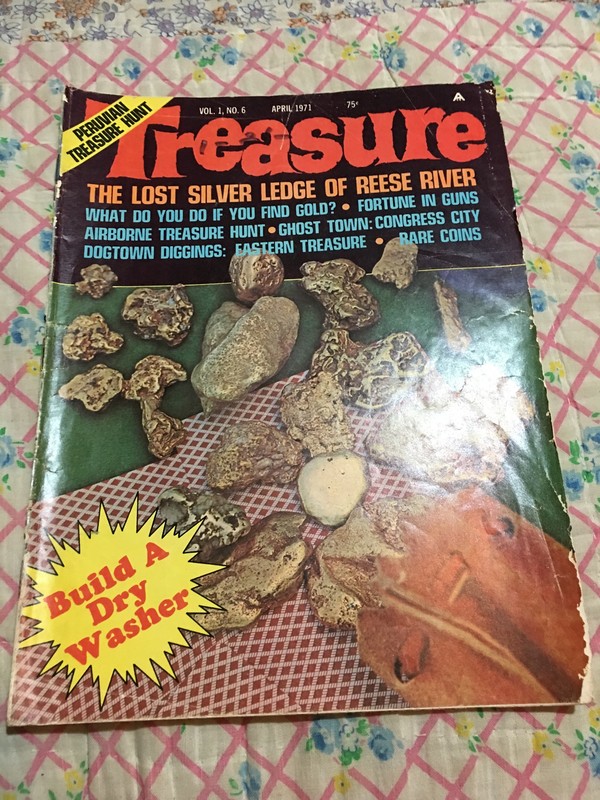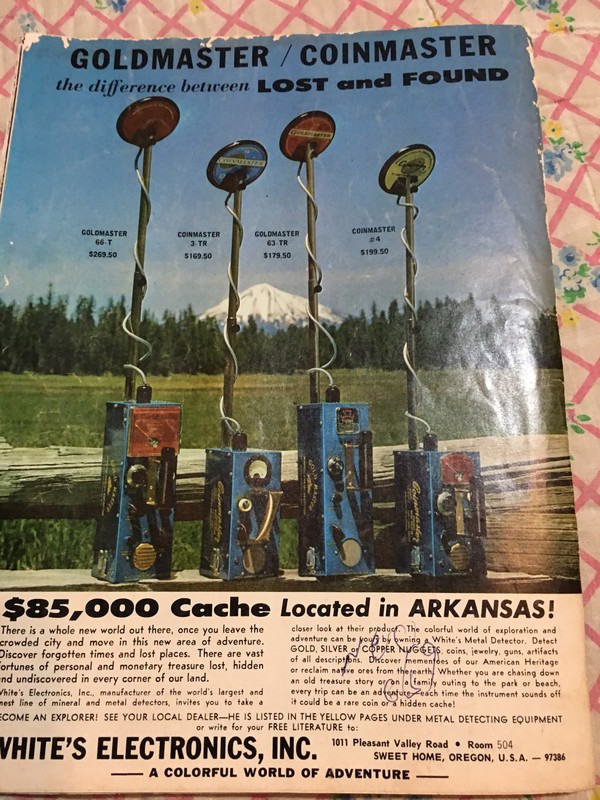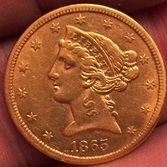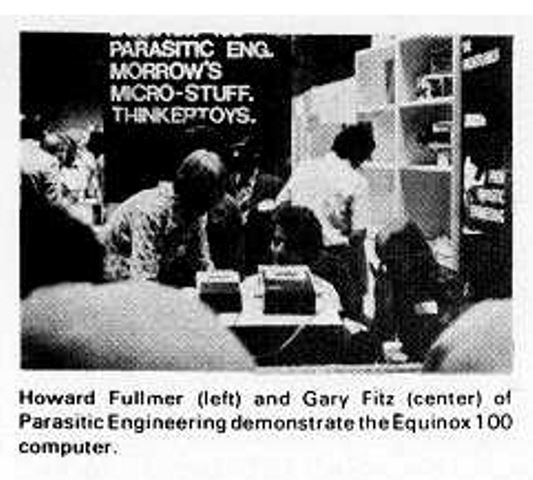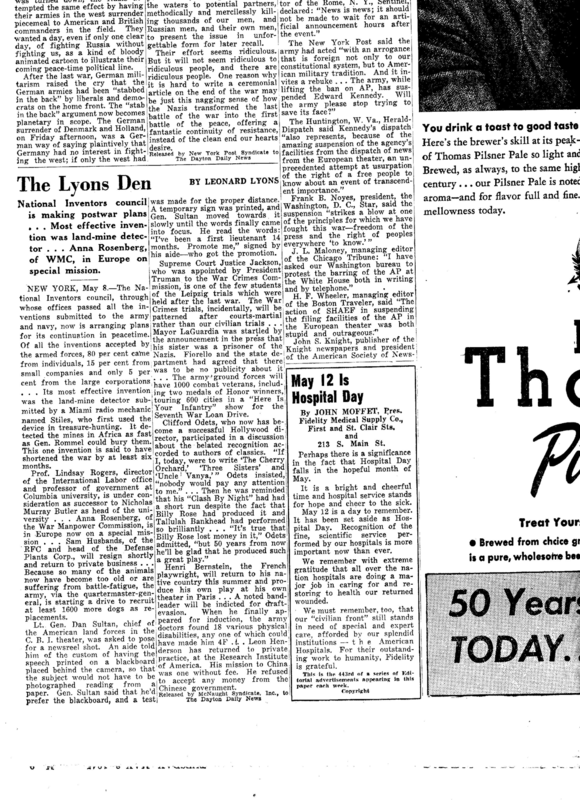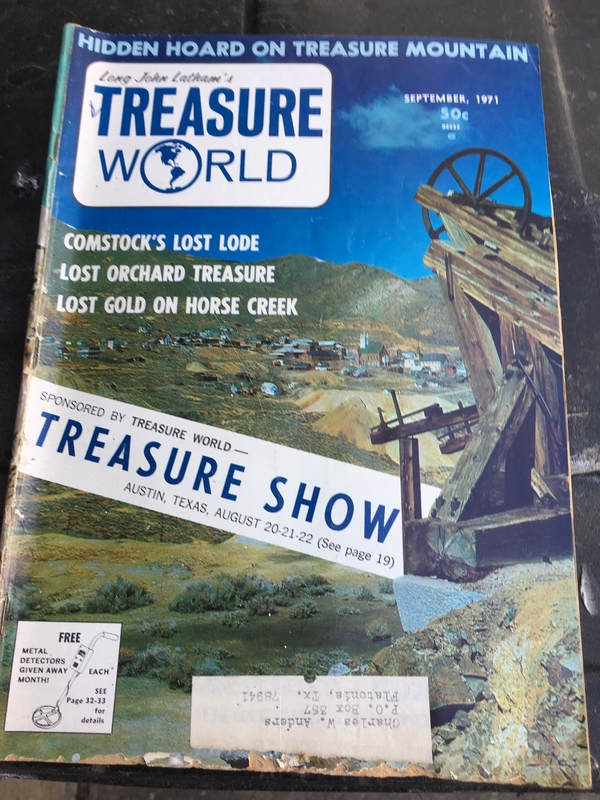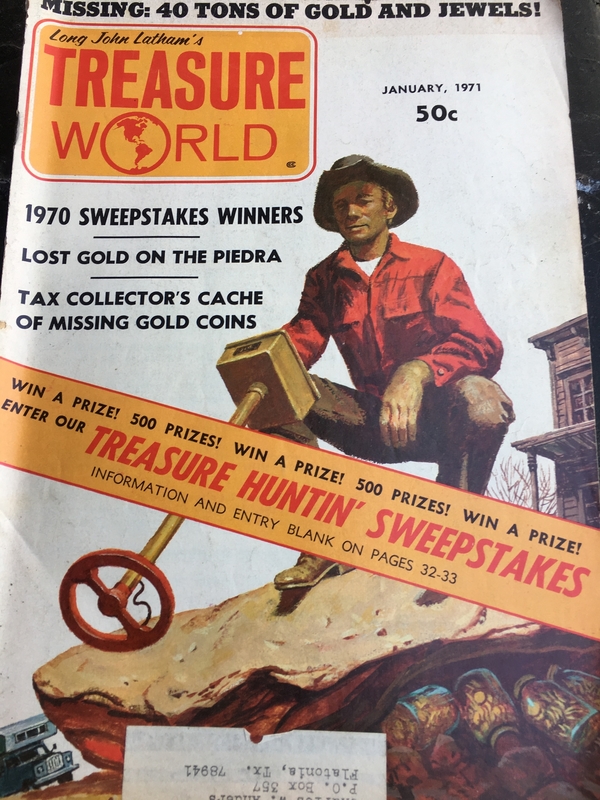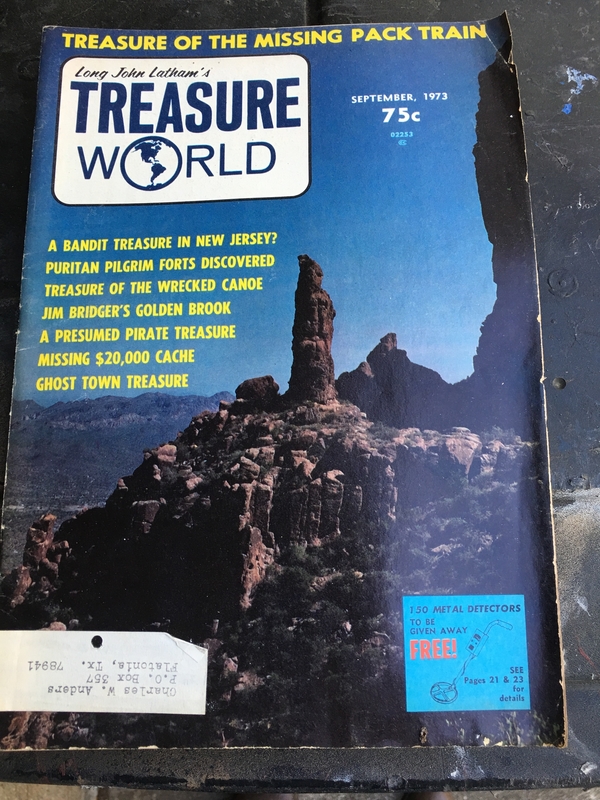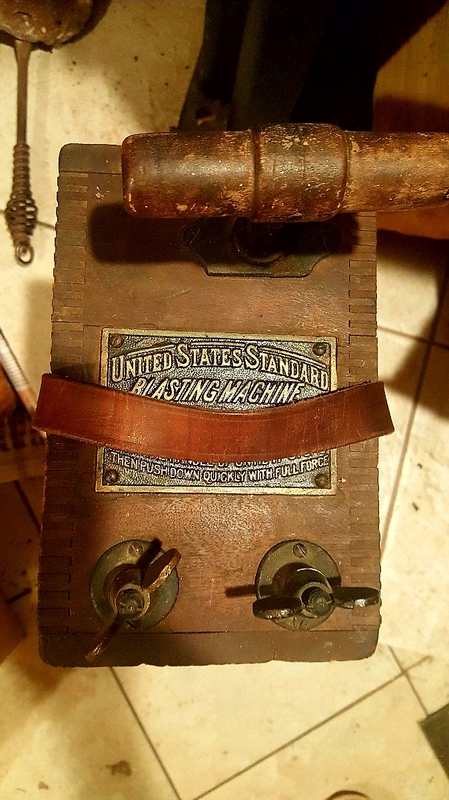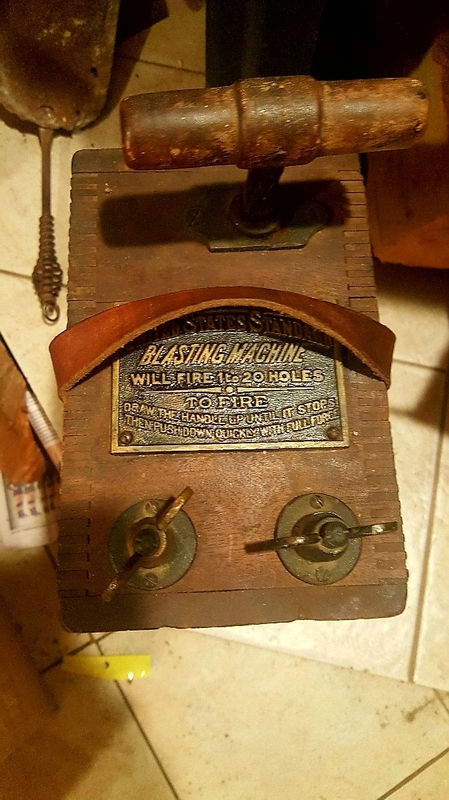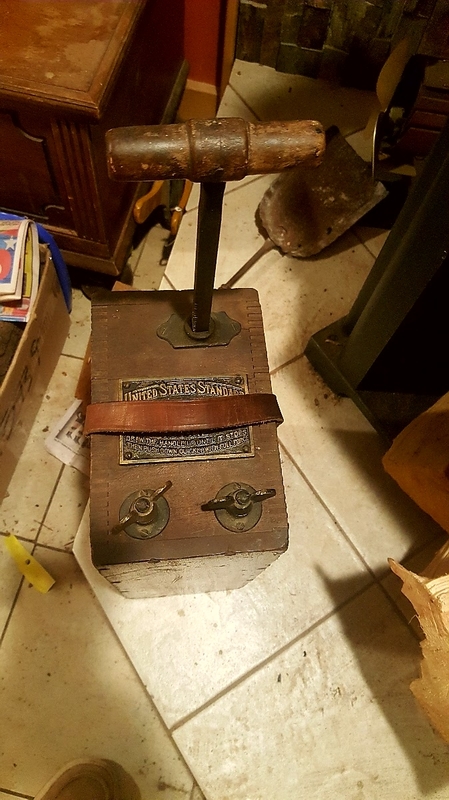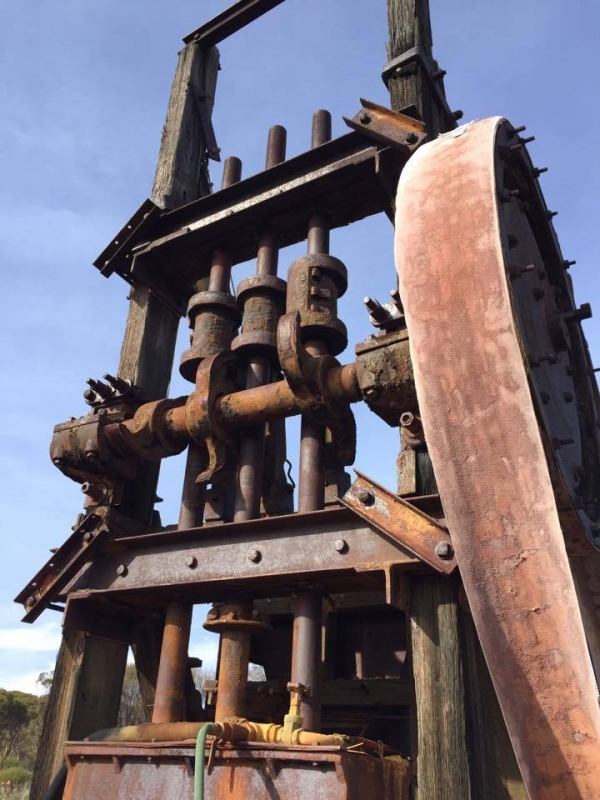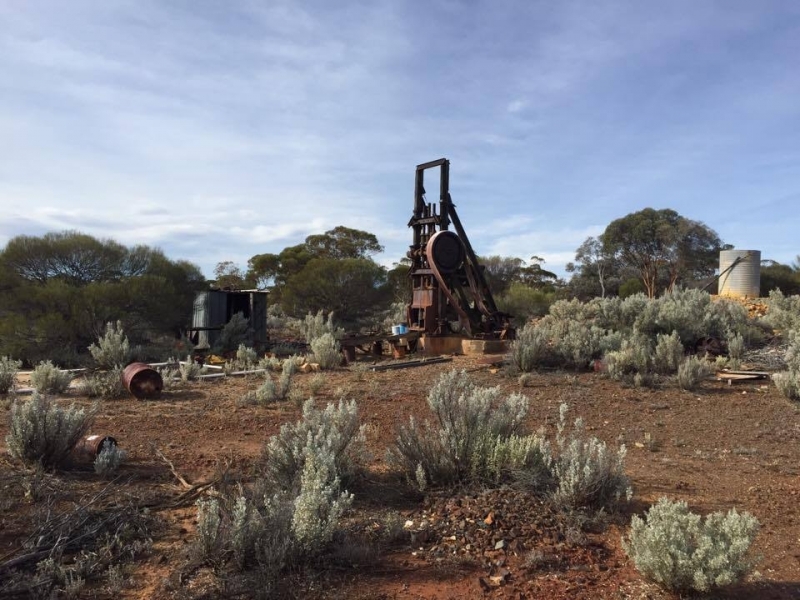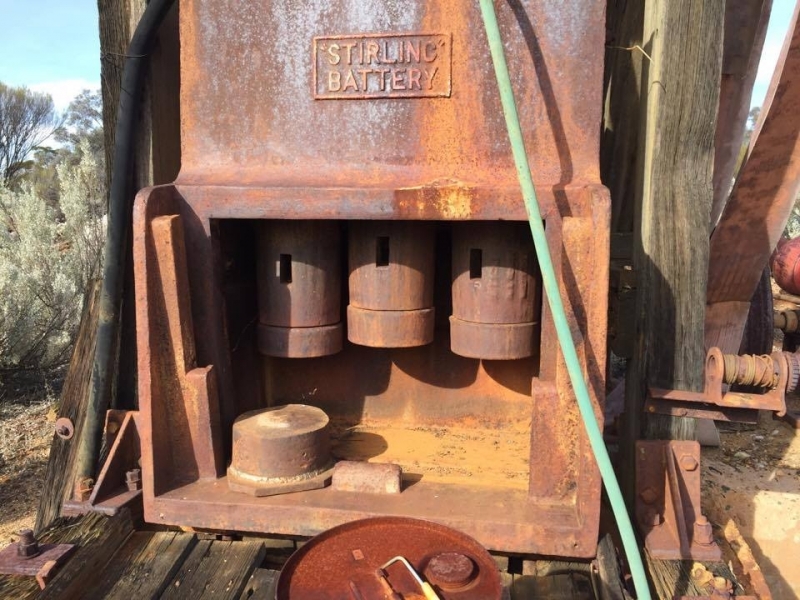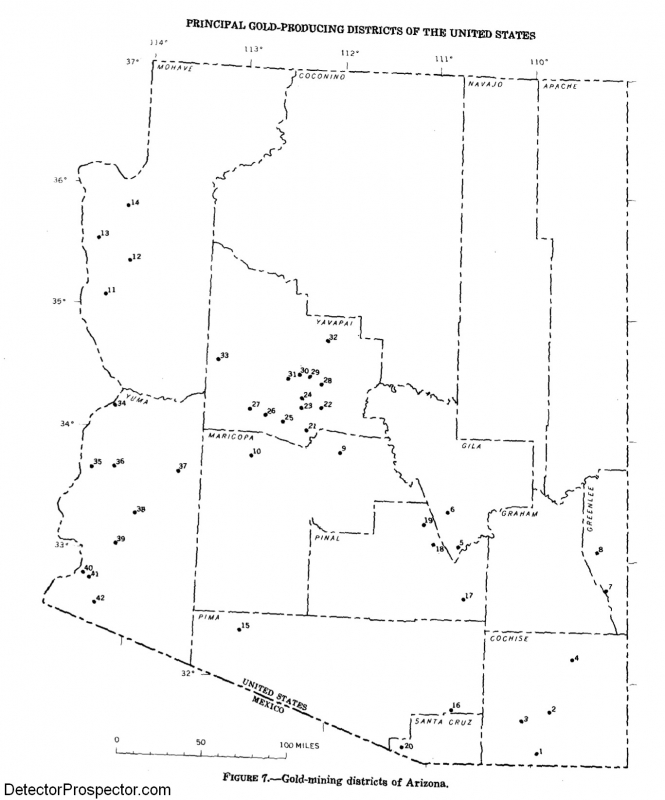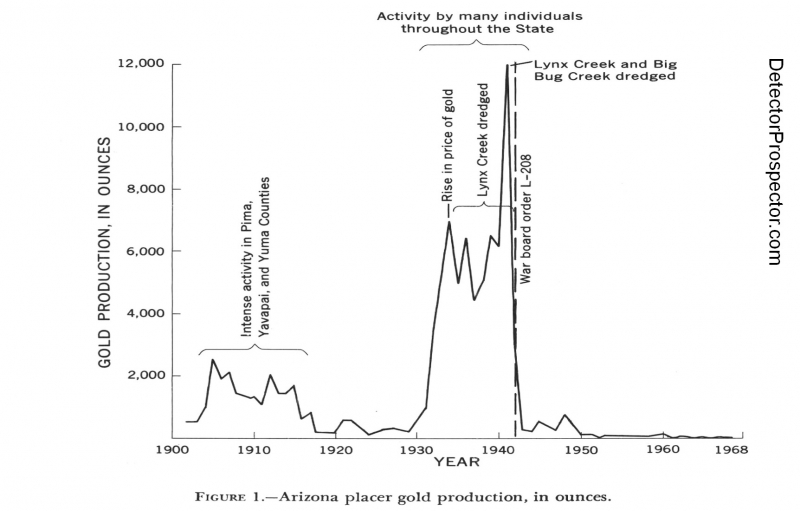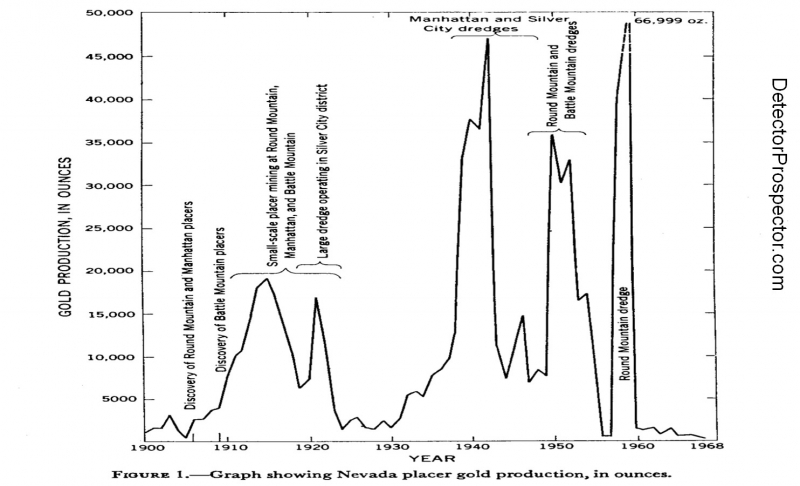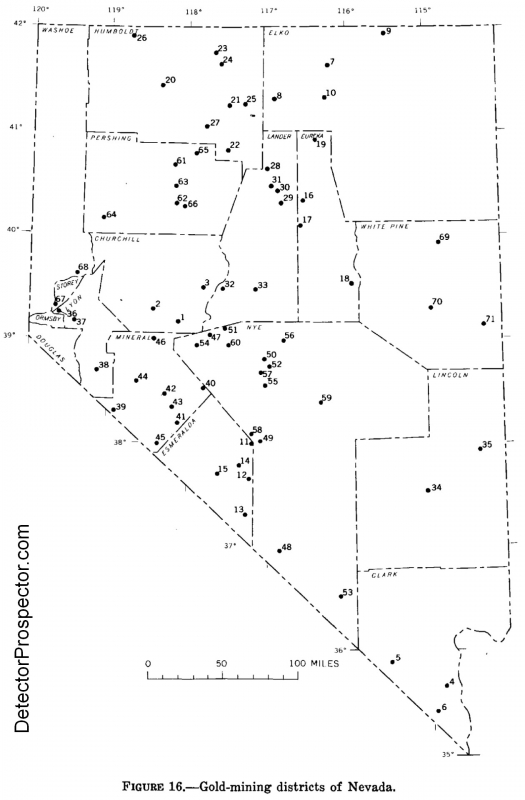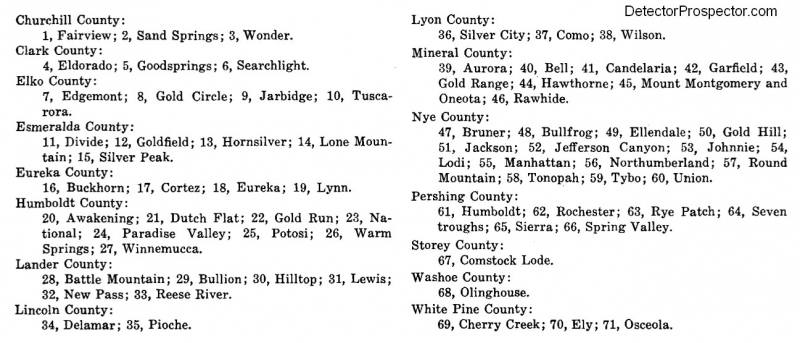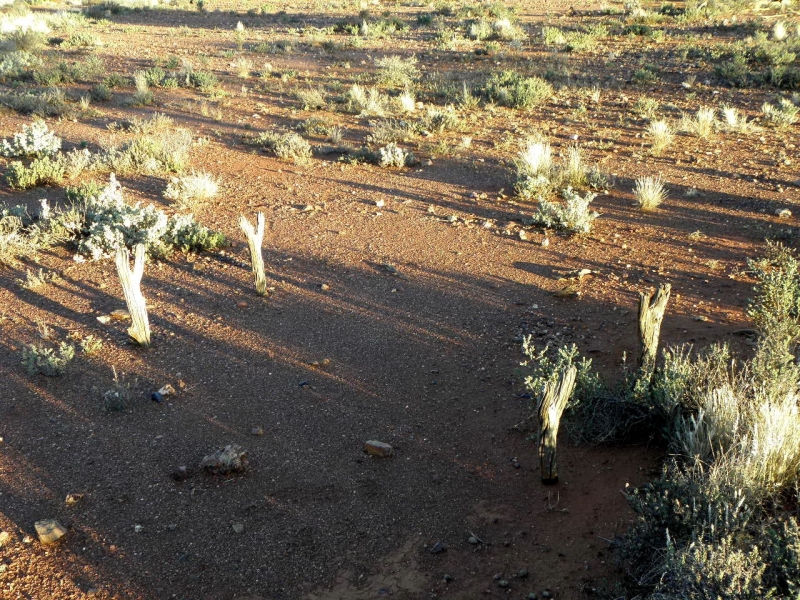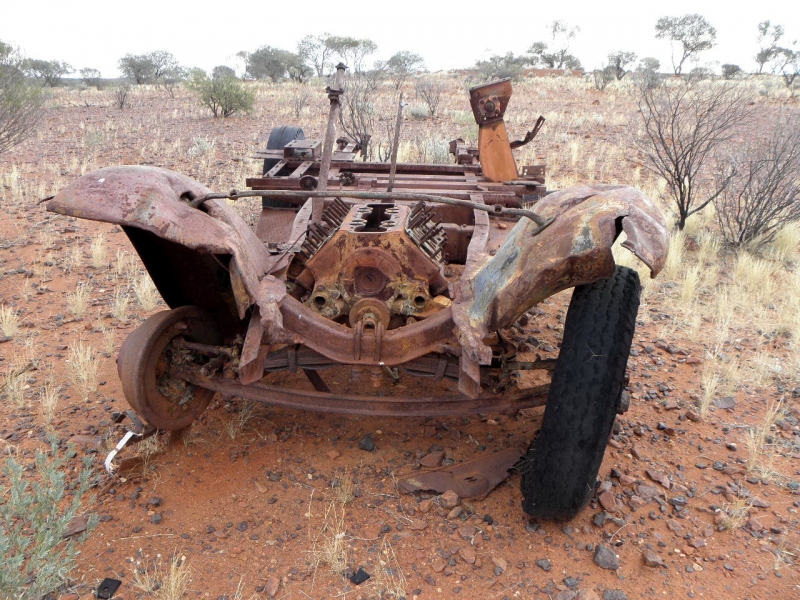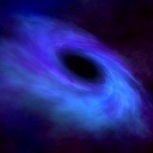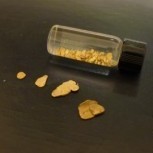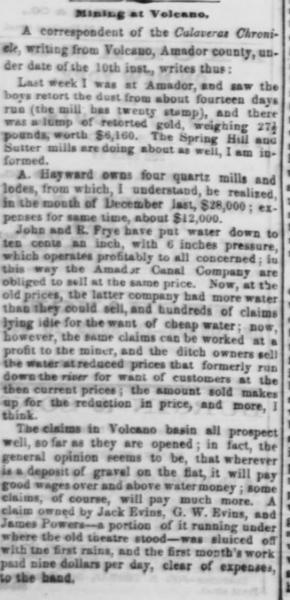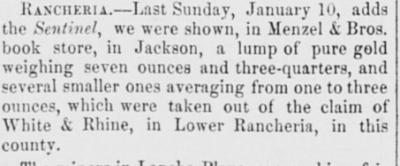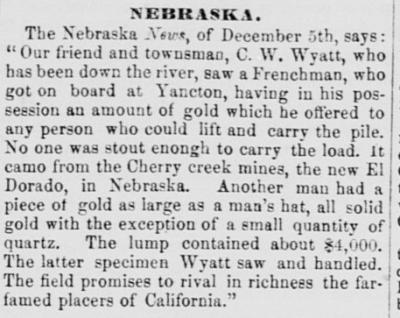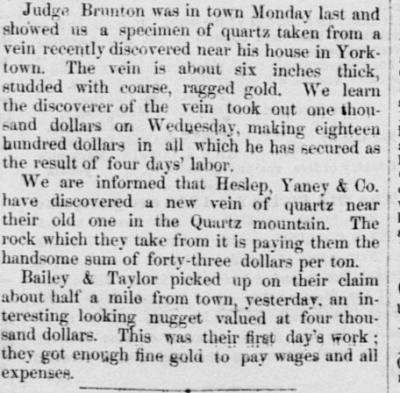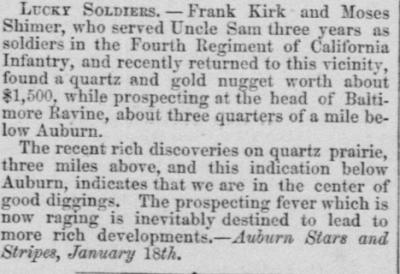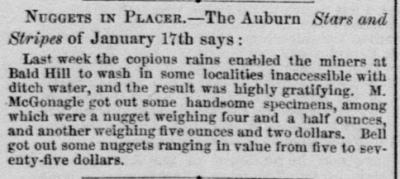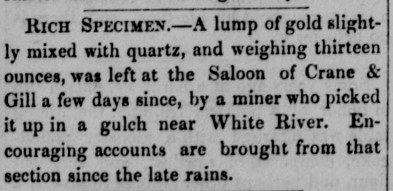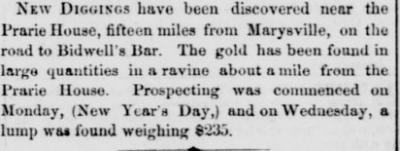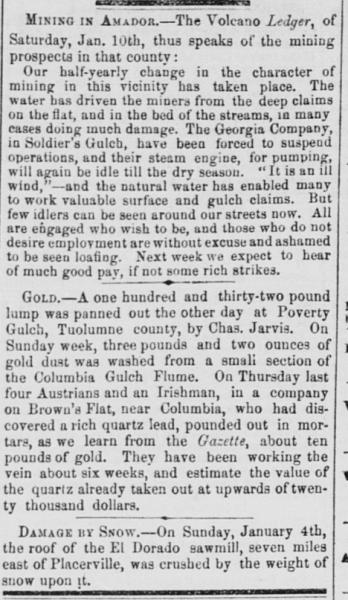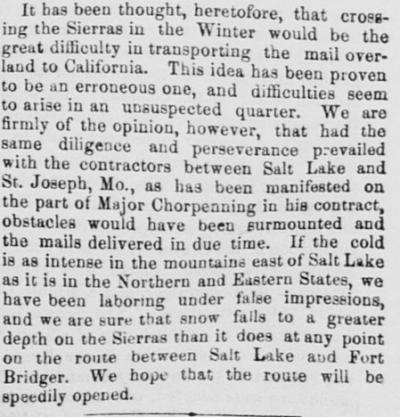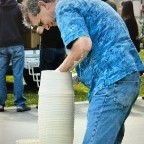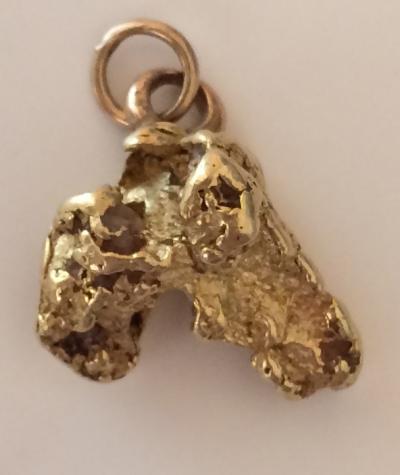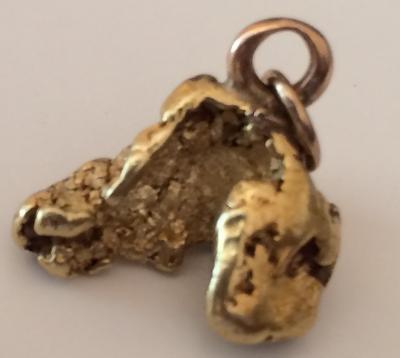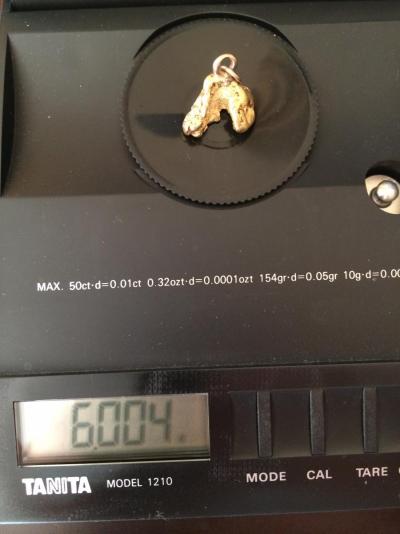Search the Community
Showing results for tags 'history'.
-
This is what White’s had going for it in 1971 with their line of detectors. I had the 66 TR it being the one to your left. When I got it I just knew I’d never want another. ha Chuck
-
Introducing the worlds first Equinox, the Equinox 100 was shown at the West Coast Computer Faire c. 1977. Wow this things been in development for like 40 years!
-
-
-
Many people think that gold was discovered at Sutter's Mill in January of 1848 but it was actually discovered on March 9, 1842 in Southern California. That is the official 'story' here: http://www.hometownstation.com/santa-clarita-latest-news/in-history-placerita-canyon-celebrates-176th-anniversary-of-the-oak-of-the-golden-dream-224619 Mitchel
-
Takes from the 80’s magazines of Treasure Hunting and their toys. A friend gave me the mags but I have some that date back to the 70’s Maybe some would make a good prize . What do you think? Chuck
-
How many of you got a Antique Blasting Box for Christmas. A close friend of mine gifted me this. Too cool. Boom.
-
Some may say that any detectable gold will be out of range of any detector by then. Well you have to remember every time it’s rain we have what we call soil erosion. It may not get to the point being like the Grand Canyon but where Rich Hill won’t be a hill anymore. The 7000 in another century to us won’t be no more than a BFO does now. Like now we see new technology in a detector coming out that didn’t exist just a year ago. I know I won’t see it and I’m sorry to say all reading this now won’t see it either. The great thing is we have the 7000 now and all the new coin machines to hunt with. So us don’t worry about the rug rats that will come after us. Get out there and hunt and may those that come after us a hundred years from now earn what they find. Chuck
-
Hi Ya'll and Happy Saturday! In anticipation of my Garrett Infinium being ordered (maybe), I decided to have a look at Google maps and see where I could go water hunt nearby. As some of you may know, there are areas where it is illegal to detect in the water just south of my area, from about Sebastian inlet south to Ft Pierce. I thought it might not be a bad idea to know exactly where these areas are, so that I could avoid getting into trouble. So I googled this search to death and found that information about these lease areas is pretty scarce. In my Google search I did find the Facebook page for Queen's Jewels Salvage Co, which leases the salvage rights from the state. These salvage areas presumably include the wreck sites and a 3000 ft radius around each one, excluding the beach area from the low tide line up to the dunes. So, law abiding citizen that I am, I pm'd whoever is in charge of the FB page and politely asked them what areas the leases cover and if Melbourne beach is ok to metal detect in the water. Here is the answer I got: "It is illegal to detect anywhere in the water. A permit from the FLA Department of Historical Resources is required to search for any historical artifact. The only detecting permitted I. The State is on the beach." That didn't sound quite right to me. I've seen lots of people in the water with detectors on the beaches all over the state and nobody was hauling them off in handcuffs. So I asked nicely if it is ok to just search for modern jewelry and does this mean that the whole state is off limits to water detecting. Well, apparently, it technically is. "Obviously that's not what you're looking for or you wouldn't have asked us. Do as you wish, I'm just telling you what the law says" Whoa there, Smeagol! I wasn't trying to steal your One Ring from you! So does this mean that all the guys detecting ankle-deep in the water at South Beach and Ft. Lauderdale are desperate fugitive criminals just waiting to be caught by the long arm of the law? Apparently so. From MDHTalk website: "As for metal detecting in the water, all lands that are below the mean high water line are considered state sovereignty submerged lands and, while it is not against the law to possess a metal detector in the water, it IS against the law to disturb the bottom sediments. So, if something is detected, it would be illegal to dig for it. " Yeah, if it's fun, somebody, somewhere has probably passed a law making it illegal. I'm beginning to wonder if detecting in the water here is a good idea. Do any of you Florida guys do it and have you ever been harassed for it? Thanks! Ammie
-
Thought i would post what i came across today, not sure how common stuff like this is still set up in the US but over here in Australia it isnt that common anymore with many being broken down and sold off or bits and pieces stolen over the years. Its a Stirling 3 head Battery, used to pulverise ore releasing the gold , looks to have been reused in the 80s maybe even 90s as there is some fairly modern hoses etc connected but overall its a great piece of antique prospecting equipment....if it wasnt so bloody heavy i would have thrown it in the back of the truck and set it up at home :) hahhahaha
-
From Placer Gold Deposits of Arizona, USGS Bulletin 1355, By Maureen G. Johnson 1972 HISTORY OF PLACER MINING IN ARIZONA Arizona's placer-mining industry began in 1774, when Padre Manuel Lopez reportedly directed Papago Indians in mining the gold bearing gravels along the flanks of the Quijotoa Mountains, Pima County. Placer mining was active in that region from 1774 to 1849, when the discovery of gold in California apparently attracted many of the Mexican miners who worked the gravels (Stephens, 1884). Arizona was then part of Mexico, and little is known of the placer mining that probably was carried on in various parts of southern Arizona. Placers were probably worked in the Oro Blanco district, Santa Cruz County, and the Arivaca district, Pima County. The part of Arizona north of the Gila River was ceded to the United States in 1848, and the part of Arizona south of the Gila River, where most of the early placer mining occurred, was purchased in 1853. Placers were discovered in the 1850's in the Bagdad area, Yavapai County, and Chemuehuevis Mountains, Mohave County; but it was not until 1858, when placers were discovered by Colonel Jacob Snively at the north end of the Gila Mountains, Yuma County, that the first placer-mining rush in Arizona was precipitated. The early years of the 1860's saw the discovery of the famous placers at La Paz, Yuma County, and Rich Hill and Lynx Creek, Yavapai County; many smaller and less famous placer fields were discovered at that time. Photo: Early placer mining on Lynx Creek, near Prescott, AZ In the 1860's, Arizona was a relatively isolated and underpopulated territory, fraught with communication and travel difficulties, and beset by Indian problems. Placer mining was actively pursued throughout the territory, and some rich lode-gold mines were discovered and worked; but real news of Arizona mining was slow to filter out from the territory to the more populated areas in California and the East. The period from 1860 to 1880 is reported as the most active and productive period in placer mining, but because of poor communications, there is very little reliable information or production record. By 1900 most placer areas had been discovered, and many were nearly worked out. Placer mining continued intermittently during the early years of the 1900's. Many attempts were made in various parts of the State to mine placer gravels by drywashing machines, but it was not until the economic impetus of the depression that placer mining became active again in Arizona. During the years 1930-38, 95 different districts were credited with placer gold production, but many of these districts produced only a few ounces. After the boom of the 1930's, the war years of the 1940's were a setback to gold mining activity. War Production Board Order L-208 greatly restricted the development of gold mines; prospecting for and mining metals essential to the war effort was deemed more important than mining gold. Even more important, however, the economy of the 1940's encouraged work in offices, factories, and war industries for those not in military service, and as a result, many miners and prospectors left the gold fields and never returned. After 1942, placer production never again reached the heights of the 1930's or the peak production of the 1860's to 1880's. GOLD PRODUCTION FROM PLACER DEPOSITS The U.S. Bureau of Mines (1967, p.15) cites 500,000 troy ounces of placer gold produced in Arizona from 1792 to 1964. I estimate that placer gold production was at least 564,052 ounces. Districts of largest placer production were the Lynx Creek, Big Bug, and Weaver (Rich Hill) districts (Yavapai County), the Gila City (Dome), and La Paz district (Yuma County), and the Greaterville district (Pima County), all with estimated placer production of more than 25,000 ounces. Arizona has many small placer-mining districts (Plate 1) from which only a few ounces of gold has been recovered, mostly during the depression years of the 1930's. For most of these districts, little information other than production has been found. Major lode-gold districts in the State, except for the Bradshaw Mountains in Yavapai County, have had very little placer gold production. Most of the placer gold produced in the State of Arizona was recovered by tedious work on a small scale by individuals who used rockers, pans, sluices, and dry concentrators. In only a few districts have large-scale placer-mining operations been successful, although many attempts were made to use large dry-concentrating machines. The most successful large-scale operations have been in the Lynx Creek and the Big Bug districts, Yavapai County, where the presence of adequate supplies of water enabled large dredges to mine the gold bearing gravels. Among the largest and most profitable large-scale dry concentrating operations were those in the San Domingo Wash district, Maricopa County, in the Plomosa district, and at La Cholla placers, Yuma County; at Copper Basin, Yavapai County, the gravel was hauled to a central washing plant where wet methods of recovery were used. The total amount of placer gold recovered yearly in Arizona from 1900 to 1968 is graphed in figure 1, which also shows major contributors to the peak production. SUMMARY The ultimate source of detrital gold in placer deposits is, for the most part, gold-bearing lode deposits, which in Arizona are represented by veins in faults, fissures, and shear zones of various sizes. Most of the placer gold found in Arizona was derived from systems of small gold-quartz veinlets and stringers scattered throughout the bedrock of the adjacent mountain ranges; in only a few localities was the gold in large placer deposits derived from vein systems of sufficient size to encourage lode mining on a large scale. Small placers commonly occur near large gold lodes, but are generally not economic. The most productive gold veins are those formed during Laramide time, which occur in rocks of Precambrian to Laramide (Late Cretaceous and early Tertiary) age. Much gold has been recovered as a byproduct from copper and other base-metal ores. Since 1941 the large copper mines have been predominant in the production of lode gold (Wilson, 1962).
-
From Placer Gold Deposits of Nevada, USGS Bulletin 1356, By Maureen G. Johnson 1973 HISTORY OF PLACER MINING IN NEVADA The first authenticated discovery of placer gold in Nevada was made in 1849 by Abner Blackburn, a member of an emigrant train to California, at the junction of Gold Canyon and the Carson River at the present site of Dayton, Lyon County (De Quille, 1891; Vanderburg, 1936a). Parties of men worked the gravels in Gold Canyon and nearby Six Mile Canyon, Storey County, for 8 years before the source of the placers, the Ophir silver lode, was discovered by Peter O'Reiley and Patrick McLaughlin in 1857 while digging a small water hole for placer mining in Six Mile Canyon (De Quille, 1891). Other lode discoveries in the immediate area followed, and soon the whole world knew of the Comstock lode in Nevada. Although placer mining continued on a small scale in Gold Canyon and Six Mile Canyon, and other placers were discovered elsewhere in the State, the richness and fame of the Comstock lode far overshadowed the importance of placer production and new placer discoveries. Following the discovery of placers at Gold Canyon, placer discoveries in Nevada were broadly in three periods: the 1860's to 1880's, when many small deposits throughout the State were discovered and sporadically worked and several large placers were discovered and extensively worked; the short period between 1906 and 1910, when very rich placers were discovered at Lynn, Battle Mountain, Manhattan, and Round Mountain; the early 1930's, when economic conditions created by the depression caused a renewed interest in placer mining, and many individuals sought, and a few discovered, new placer areas throughout the State. The location of the placers described in this report is shown on plate 1. Very little factual information can be found about the early periods of placer mining in Nevada. For many placers, the only reports available are hearsay estimates of production and speculations about the extent of the placer ground based on remnants of placer pits, shafts, and other workings. Many of the placers said to have had a high production between 1860 and 1890 were worked by Chinese miners who came to Nevada during the building of the railroads and stayed on to work at mining and other activities. The Chinese were reputed to be secretive with their earnings from the placers and did not ship the gold to the mint by Wells Fargo or other shippers. They worked the gravels very thoroughly in areas where American miners did not wish to expend great labor to win the gold. The placers in the Sierra and Spring Valley districts, Pershing County, were worked by Chinese miners; they have a very high estimated production before 1900 and a comparatively low known production since that time. One reason for the lack of information about early placer-mining activity in Nevada was the great attention given to the rich silver-lode districts such as the Comstock, Eureka, and Reese River districts. Whereas in many other States, the discovery of gold placers stimulated the search for lode-gold deposits and other gold placers, in Nevada early attention was devoted to searching for rich silver lodes not necessarily associated with derived placers. The comparatively late discovery of some of the richest placers in the State has afforded a very clear picture of the development of placer mining during the 1900's. The discovery of rich silver ores at Tonopah in 1900 and rich gold ores at Goldfield in 1902 stimulated great activity in mining exploration throughout Nevada. Many placers discovered during the 1906–10 period were found by men looking for ores similar to ores at Tonopah and Goldfield. Placer mining at Manhattan and Round Mountain districts, Nye County, and Battle Mountain district, Lander County, began with numerous small drywash operations in the gravels, then expanded as water supplies were developed for sluicing and hydraulic methods of mining. Late in the history of these districts, but long after many other placer districts were inactive, large-scale dredging operations began. The success of the dredge operations in these semiarid districts is unique in the history of placer mining in the Southwestern States. Placer mining history in the other districts is typical of desert placer mining throughout the southwest. Most production resulted from the relatively intense period of prospecting immediately following discovery; a decline in placer-mining activity followed, then a small revival during the early 1930's. The economic depression of the early 1930's stimulated investigations of many Nevada placer districts for the purpose of developing large-scale placer-mining operations. By the late 1930's, many mining companies had investigated many placer areas and had formulated plans to develop certain areas. The placer activity of the 1930's was abruptly halted by the beginning of World War II and the passage of War Board Order L–208, which restricted gold mining throughout the country. The dredge operation at Manhattan was given special permission to continue operations, although on a reduced scale, and, as a result, placer gold production after 1942 did not decline as markedly in Nevada as in other States. Most of the placer mining was done by the basic methods of drywashing, sluicing, and rarely, small-scale hydraulic mining. In addition to the large dredge operations at Manhattan, Round Mountain, and Battle Mountain, other dredges operated in different districts, notably Silver City, Lyon County; Spring Valley, Pershing County; Van Duzer, Elko County; and Bullion, Lander County. Since the completion of the Round Mountain dredge operation in 1959, placer mining in Nevada has progressively diminished in importance. GOLD PRODUCTION FROM PLACER DEPOSITS The U.S. Bureau of Mines (1967, p.15) cites 1,900,000 troy ounces of placer gold produced in Nevada from 1792 to 1964. I estimate a total production of 1, 700,000 ounces of placer gold for the State from the first placer discovery to 1968. The U.S. Bureau of Mines estimate includes some unauthenticated reports of very high placer gold production from some districts worked before 1900. The most productive placer districts in Nevada are the Battle Mountain district, Lander County; Silver City district, Lyon County; Manhattan and Round Mountain districts, Nye County; Spring Valley and Sierra districts, Pershing County; and Osceola district, White Pine County. Most of the gold recovered before 1900, an estimated 905,850 ounces, was recovered by many individuals using drywashers or small sluices to work gravels brought to the surface from shafts or pits. In the major districts (Silver City, Spring Valley, Sierra, and Osceola) worked intensely between 1849 and 1890, the miners dug numerous shafts, tunnels, and adits in the gravels. At Osceola, large banks of gravel were hydraulicked, leaving sheer cliffs of unworked gravels exposed today. After 1900, drywashers, small sluices, and small concentrating machines continued tp be used in placers throughout the State, but, except for the very productive first few years of drywashing at Manhattan, Round Mountain, and Battle Mountain (1906-15), the greatest part of the placer gold was recovered by large dredging operations. Figure 1 is a graphic representation of the total amount of placer gold recovered yearly in Nevada (1900-68) and the contributors to the major production peaks. Dredge mining in Nevada started in 1911, when the Federal Mining Co. used a small wooden dredge to work gravels in Spring Valley Canyon (Pershing County). The operation was only moderately successful, but it encouraged other companies to consider desert dredge mining. During the periods 1920-23, 1940-42, and 1946-47, dredges worked in the relatively well-watered Carson River at Gold Canyon (Dayton, Lyon County). Small dredges worked gravels in a number of districts throughout the State (such as the Bullion district, Lander County; the Willow Creek district, Pershing County; and the Olinghouse district, Washoe County), but in many of these operations, the water was not sufficient for the use of floating dredges, and other conveyances were used to transport the gravels to the dredge, which acted as a central washing plant. The era of major large-scale desert dredge operations began in 1939, when a floating bucketline dredge was brought to Manhattan Gulch (Nye County). When operations ceased in 1946, this same dredge was transported to Battle Mountain (Lander County) to work the placers in the Copper Canyon fan from 1947 to 1955. In the 1950's, a non-floating dredge was used at Round Mountain (Nye County) to recover large amounts of placer gold from a deep pit. Since cessation of dredge operations at Round Mountain in 1959, placer gold production in Nevada has returned to small-scale sporadic or part time operations by individuals. SUMMARY Placer gold has been found in 115 mining districts in Nevada. Many of these districts have produced, or are said to have produced, only a few ounces of placer gold. Thirteen districts have produced more than 10,000 ounces. Although placer gold has been recovered from each of the 17 counties in Nevada, most of the placers are in the western part of the State (see pl. 1) in the area termed the "Western Metallogenic Province," which is characterized by the dominance of precious metal ores (Roberts, 1946a). A few placers (all of minor importance except the Osceola district) are found in the eastern part of the State in the area termed the "Eastern Metallogenic Province," which is characterized by the dominance of base-metal ores. Most of the placer gold found in Nevada has been derived from veins and replacement deposits that have been successfully worked for the gold and silver content of the ores. In the few districts where source of the gold is unknown, it is presumed to be small scattered veins in the adjacent bedrock. In most of the very productive lode mining districts, only small amounts of placer gold have been recovered, whereas in the very productive placer districts, lode-gold production is close to, and sometimes less than, placer gold production. An exception is the Silver City district (Lyon County) , which has yielded a high production of placer gold derived from ores of the Comstock lode (Lyon and Storey Counties), the largest silver producing district in the State.
-
What we have come across out in the bush on our golding travels ( well some of it anyway ) Enjoy & post up your relic pics Cheers Ashley
-
It's always nice to go back and look at some really good gold: http://bb.bbboy.net/alaskagoldforum-viewthread?forum=50413641711&thread=7216
-
I just watched this and thought It might be of interest, john.
-
http://www.adn.com/article/20160310/gold-recovered-century-old-alaska-shipwreck-sale
-
Hello beings the weather has stopped alot of us from futher detecting, I thought i would share some mining articles from our historical miners that set forth the expansion to the west and helped found our passion to hunt for gold. these articles are from jan. 10-17 from 1800's. if no one objects i can share some every week. till the dam weather breaks. what can i say i'm bored.
-
As winter time gets closer I always get to thinking about Snow and a couple of years ago I found one of the best photographic sites ever, I did a search for Alaskan Mines and I found all these photos of places and Antiques from days gone past, In the second link there is a list of their themed photos. I hope some may find them interesting, http://alaskaphotographics.photoshelter.com/search?I_DSC=Mines&U_ID=U0000CbLURB8TBIo&I_USER_ID=U0000CbLURB8TBIo&I_DSC_AND=t&_ACT=search&submit=Search http://www.alaskaphotographics.com/ john
-
So most of us have read about how during the war gold mining was not allowed since we needed to concentrate all our mining resources on useful industrial materials that could applied towards the war effort (iron, vanadium, uranium, tungsten, etc). But after visiting a number of old abandoned mines that ran during the war years I'm left wondering if some of these mines were actually still going after gold and reporting some minor tertiary commodity as their official "product" instead like iron. Has anyone ever run into the same feeling at certain mines? Is there there any documentation showing that this happened? I'm guessing no since it would have been illegal at the time, but I'm just curious. Were any mines ever caught mining gold when they should have been mining something else? Are there records from whatever dept monitored mines back then to make sure the miners were not going after gold?
-
thought id post a picture of a nugget that has special meaning for me. this nugget was found by my great grand father in Jackson California back in around 1890 when he was a young man of about 22 years and working as a gold minor.
-
I heard this rumor once white had chance at buying out minelab, any truth to this? It was years ago.


